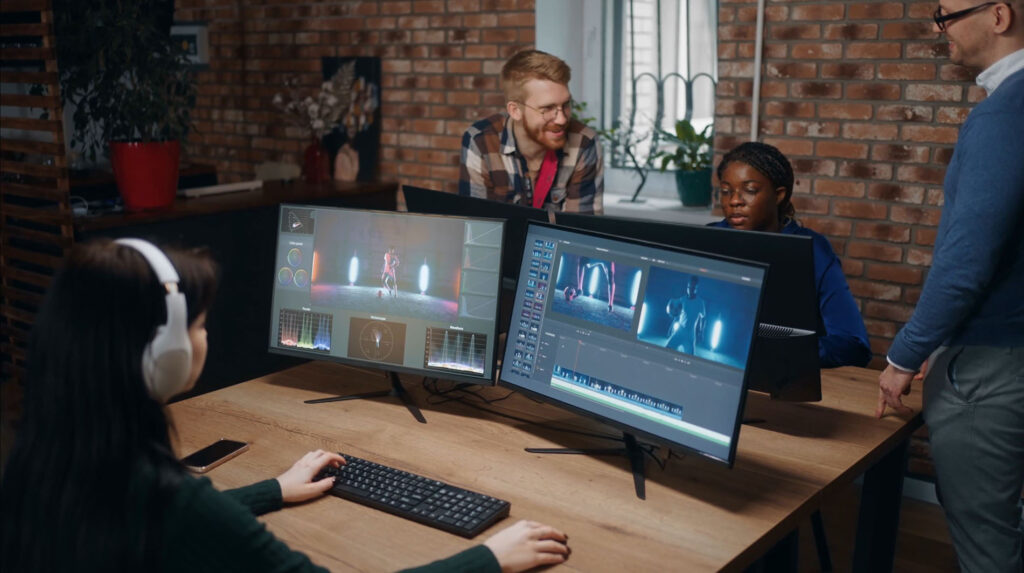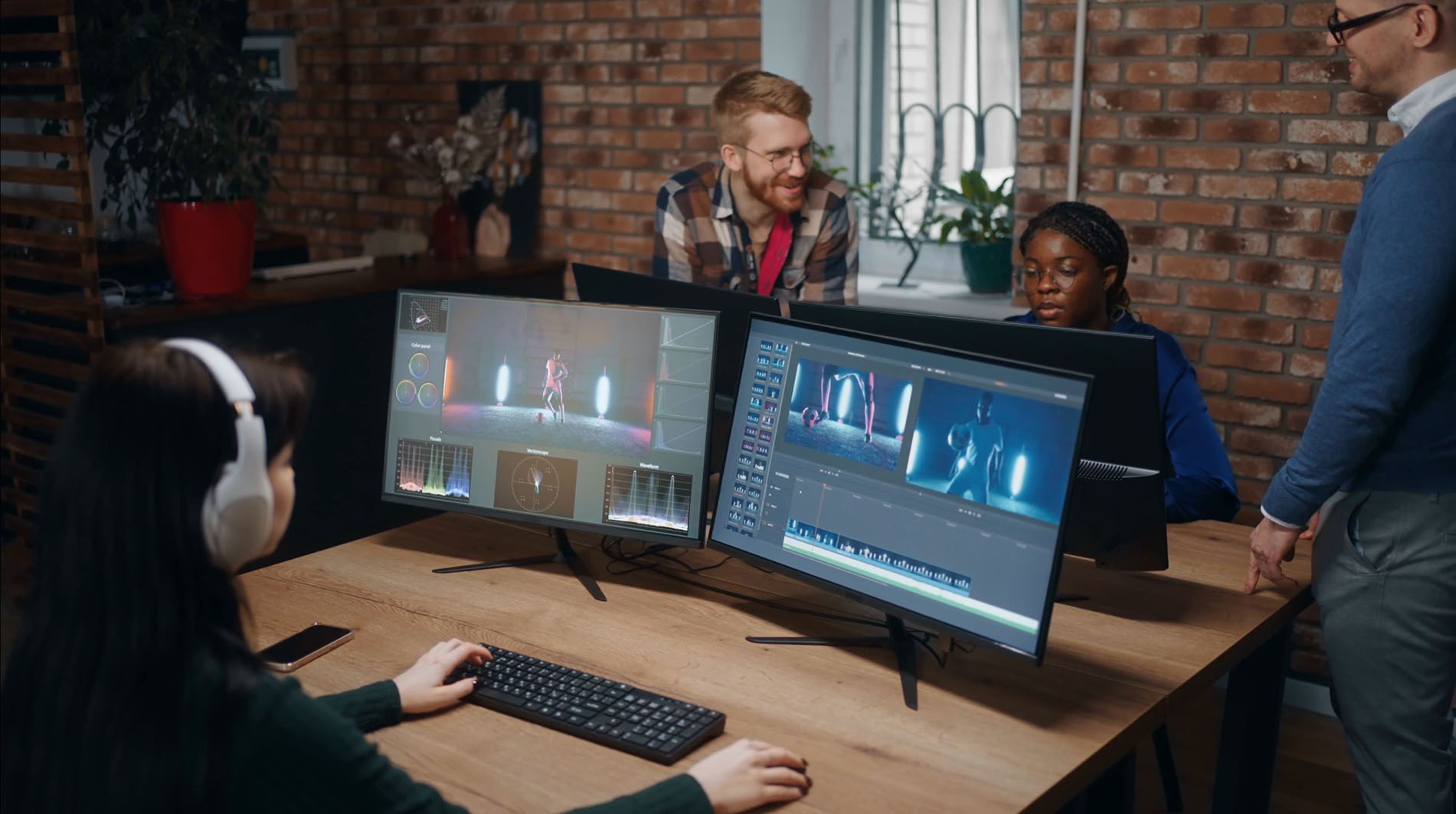What and Efficient and Effective Video Production Process Looks Like

Video content is one of the most powerful tools for engagement, storytelling, and brand building. Whether you’re producing a promotional commercial for your brand, an explainer video for customers, or a documentary of an event, having an efficient and effective video production process is key to delivering a high-quality product while saving time, energy, and resources. Here’s a breakdown of what an optimal video production workflow looks like from planning to post-production.
1. Pre-production: Laying the Groundwork
Efficient video production starts long before the camera rolls. The pre-production phase is all about detailed planning to ensure smooth execution.
- Idea Development and Conceptualization: Before you begin any practical steps, develop a clear idea. Ask yourself: What message do you want to convey? Who is the audience? What is the goal of the video? You should also determine the video’s tone, style, and core narrative at this stage.
- Scripting and Storyboarding: A well-written script serves as the backbone of your production. Once the script is solid, create a storyboard to visualize every shot and camera angle. Storyboarding reduces ambiguity, helping the entire team understand the flow of the video. Sometimes, we’ll even recommend creating a previsualization, which involves shooting the video internally first, so every one knows the pacing and exact shots that will make it into the final video.
- Budgeting and Scheduling: Efficient production hinges on sticking to a budget and a schedule. Outline a realistic budget that covers crew, equipment, location fees, actors, and post-production. Set a detailed shooting schedule and communicate it with all stakeholders.
- Location Scouting and Casting: Identify the locations for filming early on, and ensure they fit the narrative, are logistically viable, and align with your budget. For larger projects, casting the right talent is equally important. Allocate time for auditions and screen tests if necessary.
- Shot List and Equipment Prep: A shot list gives a granular breakdown of the visual components you’ll capture. It ensures you don’t miss key scenes. Ensure all necessary equipment (cameras, lighting, sound gear, etc.) is ready, tested, and in good condition ahead of time.
2. Production: Executing the Vision
With a solid pre-production foundation, the production phase should run like clockwork. This is where the vision comes to life, and efficiency is critical to staying on budget and schedule.
- Set Clear Roles and Responsibilities: The larger the team, the more moving parts there are. Every person on set—from the director to the sound engineer to the production assistant—should know their role. Clear communication lines reduce confusion and errors.
- Maximize Your Shooting Schedule: Time is money in video production. Stick to your shot list but be flexible enough to allow for creative improvisation if an unexpected opportunity arises. Avoid reshooting unless absolutely necessary to save on time.
- Capture High-Quality Sound and Visuals: Always prioritize high-quality audio and visuals. Even a brilliantly written and well-acted video will fall short if the sound is inaudible or visuals are blurry. Continuously check your footage and sound recordings to catch any issues in real time.
- Back-Up Footage: During shoots, back up your footage at the end of each day. This ensures that no content is lost due to equipment failure or human error, which can be devastating to a project.
3. Post-Production: Bringing It All Together
Post-production is where the magic happens. This is where your raw footage is transformed into a polished, engaging video.
- Efficient Editing: Good editors are storytellers at heart. They know how to cut footage to enhance the story while keeping the audience engaged. Speed and efficiency in editing come from knowing the tools (e.g., Adobe Premiere, Final Cut Pro, DaVinci Resolve) and having a clear idea of what needs to be cut, reworked, or kept. Use your storyboard as a guide, but allow for creative freedom where necessary.
- Incorporate Visual Effects and Graphics: Depending on your project, you may need animations, motion graphics, or transitions. Avoid overloading your video with effects; make sure every graphic element has a purpose and enhances the message.
- Sound Design and Music: High-quality audio design elevates the video significantly. During post-production, this includes syncing dialogue, mixing background sound, adding effects, and layering the right music to evoke the intended emotions.
- Color Grading: To give your video a cohesive and professional look, color grading is crucial. It enhances the mood and consistency of the video, ensuring that all shots, even if filmed at different times, look uniform.
- Feedback Loops: Create time for internal review and external feedback. Share rough cuts with your team or client, gather input, and make revisions. Efficient feedback loops help refine the product without losing the original vision.
4. Distribution: Reaching the Audience
A successful video production process doesn’t end with the final cut. Knowing how to distribute the video efficiently is key to achieving your goals, whether it’s brand awareness, sales, or educational outreach.
- Format Optimization: Different platforms require different formats, aspect ratios, and lengths. Ensure that you have multiple versions of your video optimized for platforms like YouTube, Instagram, TikTok, or even television.
- SEO and Metadata: To help your video reach the right audience, apply SEO principles to your video’s title, description, and tags. This boosts discoverability, especially on platforms like YouTube and Vimeo.
- Strategic Publishing: Choose the right time to publish your video, based on your audience’s behavior and platform algorithms. Consider promoting it through social media, email campaigns, or paid ads. We’ve partnered with Cloudvast Media to run paid ads through television and social media channels and gather metrics on how to increase your reach as much as possible.
Conclusion
An efficient and effective video production process is all about meticulous planning, seamless execution, and creative problem-solving. By streamlining pre-production, staying organized during production, and fine-tuning the video during post-production, you not only save time and money but also ensure your final product achieves its intended impact. With a structured approach and a well-equipped team, you can create videos that resonate with audiences while maintaining a smooth and professional production flow. For an inside look at our video production processes look like, we’d invite you to check out some of our case studies.

COMMENTS